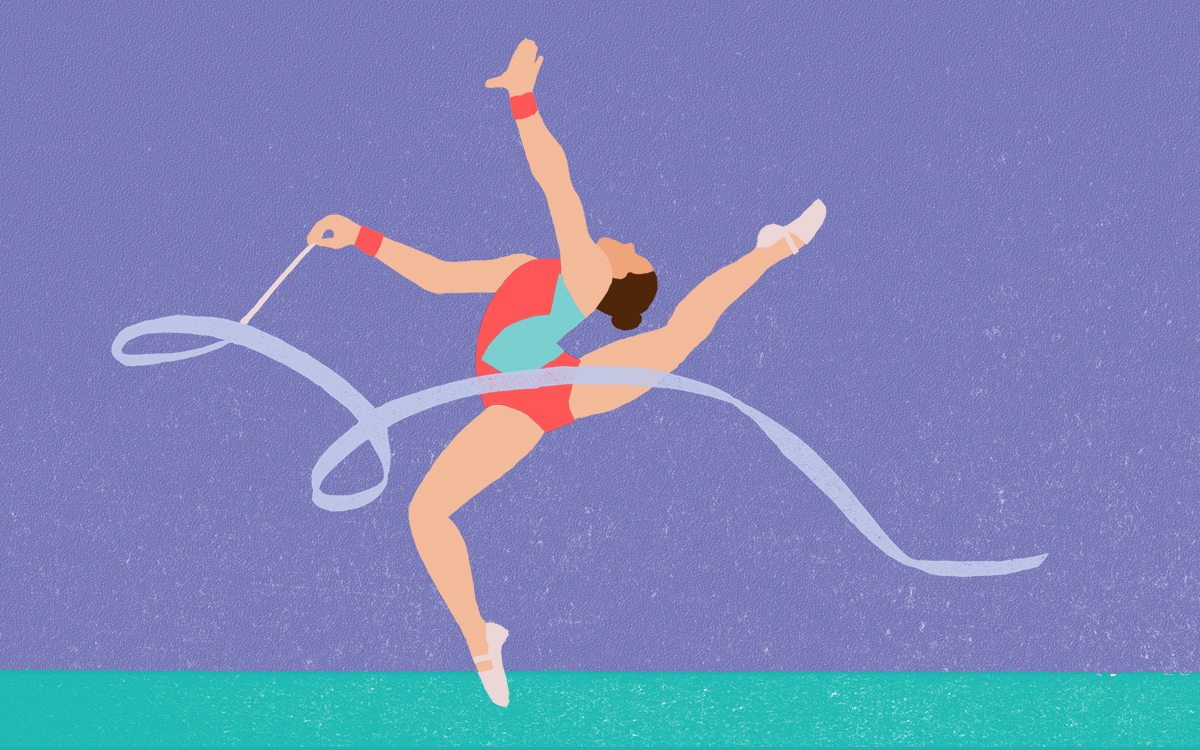Content
Cette page est aussi disponible en français
Ribbon, hoops and… AC/DC, welcome to the world of rhythmic gymnastics! With our "24 Sports Chrono" series, you'll know everything - or almost everything - about every discipline at the upcoming Olympic and Paralympic Games. On your marks! Get Set! Go!
Sports or dancing?
Combining gymnastics and classical dance, rhythmic gymnasts take to the floor in a variety of ways. Apparatus includes balls, ribbon, hoops and clubs. This discipline requires skill, balance, athleticism and flexibilty. During the Games, countries will participate in two events with groups of 5 athletes and one individual event in which the team representative has four performances.
The genuine beauty of it all means spectators will be left wanting more. But group performances must last a minimum of 2 minutes 15 seconds and a maximum of 2 minutes 30. Individual displays must last between 75 to 90 seconds. Penalties are taken if these timeframes are violated.
Originating from eurythmics and governed by the International Gymnastics Federation (founded in 1881), modern rhythmic gymnastics made its Olympic debut in Los Angeles in 1984, with an individual event. Twelve years later, in Atlanta in 1996, an ensemble event was added to the program.
Required skills: flexibility, coordination, body strength and aesthetics
Stravinsky or AC/DC?
Gymnasts have a choice over what music they will perform to. This is essential to their routines. From classical music to rock, the choices are varied and sometimes explosive… Here are a few examples. At Rio 2016, bronze medallist Ganna Rizatdinova (Ukraine) danced to Annie Lennox's cover of "I Put A Spell On You". More surprisingly, in Tokyo in 2021, Russia's Dina Averina performed to the masterful violin sound of David Garrett's "Thunderstruck", while Zohra Aghamirova (Azerbaijan) played to AC/DC with a ball routine.
Liking this feature?
The "24 Sports Chrono" is a weekly feature published during the lead up to the Games. Missed the previous episode? Catch up here with taekwondo.
Who will be representing France?
Hélène Karbanov earned her spot at the Olympics at the 2023 World Championships in Valencia, Spain on August 24th, finishing thirteenth in the all-round qualifying competition.
With a seventh placed finish in the qualifiers on August 25th, 2023, the French ensemble also booked their Olympic ticket at the world championships in Valencia. Take a look at their performance!
Vidéo Youtube
The French Gymnastics Federation will select one other gymnast who will represent France at the Paris Games by the end of June. The federation will also select five gymnasts who will make up the Ensemble at the Paris Games.
Where and when?
The rhythmic gymnastics events will take place from August 8th to 10th (group and individual competitions) at the Arena Porte de la Chapelle.
Do you speak rhythmic gymnastics?
Let's take a closer look at two of the four available apparatus.
The ribbon is the most spectacular apparatus because it must be in constant motion, which makes perfect execution very difficult. Made of hemp or of a similar material, it is attached to a rod (the shaft) and has a flexible joint. The gymnasts put on a remarkable display of agility combined with the gracefulness of the ribbon that flows with them.
Clubs, on the other hand, are made of plastic, are 40 to 50 cm long and weigh 150 g each. They require incredible hand to eye coordination.
There's also the ball, the hoop and the rope, but since 2011, the latter is no longer recognized as a valid apparatus.
Why take up rhythmic gymnastics?
For the first time in the history of the Games, men will be allowed to take part in artistic swimming for the team event. This is unprecedented, as until now, it was a woman only competition.
Unfortunately, men will not be competing in rhythmic gymnastics due to a lack of competitors. Nevertheless, countries like Spain and Japan, where the sport is extremely popular, have male championships.
The benefits of rhythmics gymnastics
This sport requires strength all over the body and develops coordination, flexibility, muscular strength and concentration.
Rhythmic gymnastics can also have a positive impact on mental health and general well-being. It can be a form of expressionism and a great source of creativity for those uptaking it.
In short, this sport makes you happy. Even if it is extremely demanding!
Where can you play?
Rhythmic gymnastics is accessible from the age of 3 and can be practiced all year round. There are a multitude of clubs and associations offering this activity in Paris.
We want to hear from you!
Was this information useful to you?
Please note: we cannot reply via this form (please do not include any personal information).



